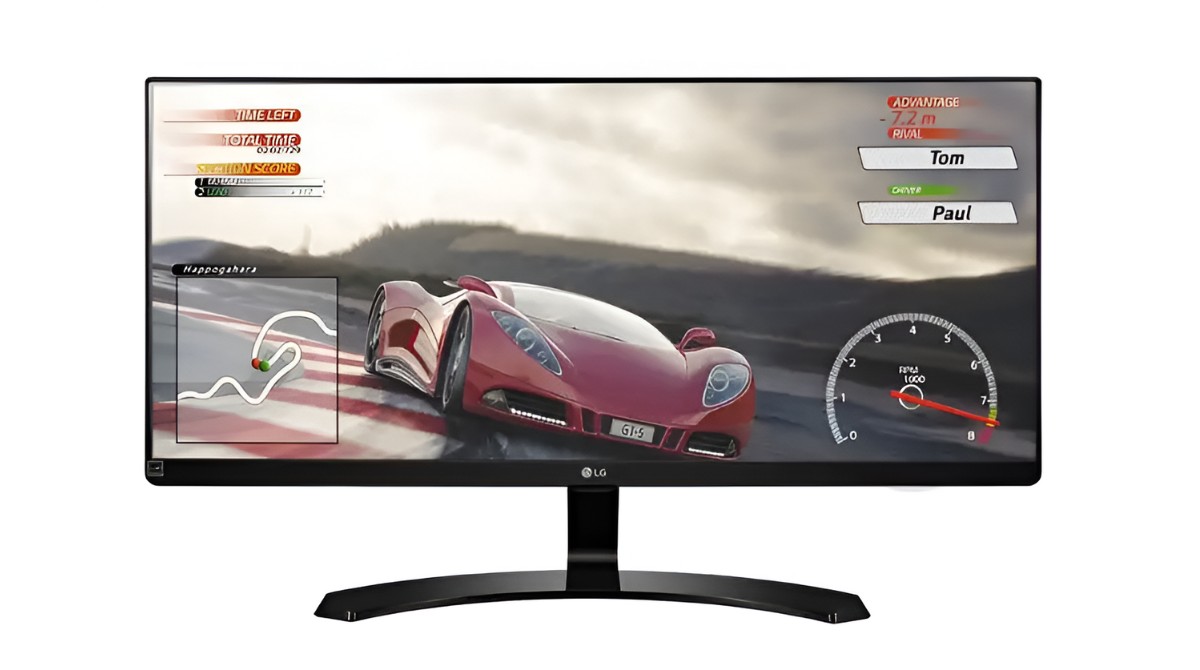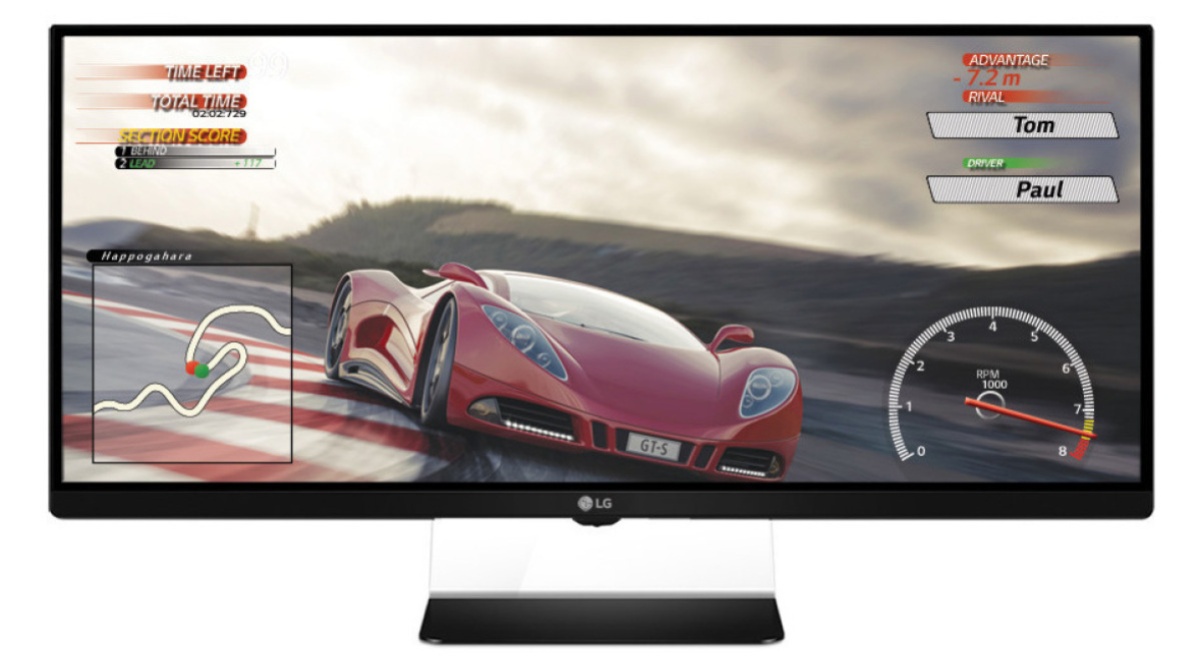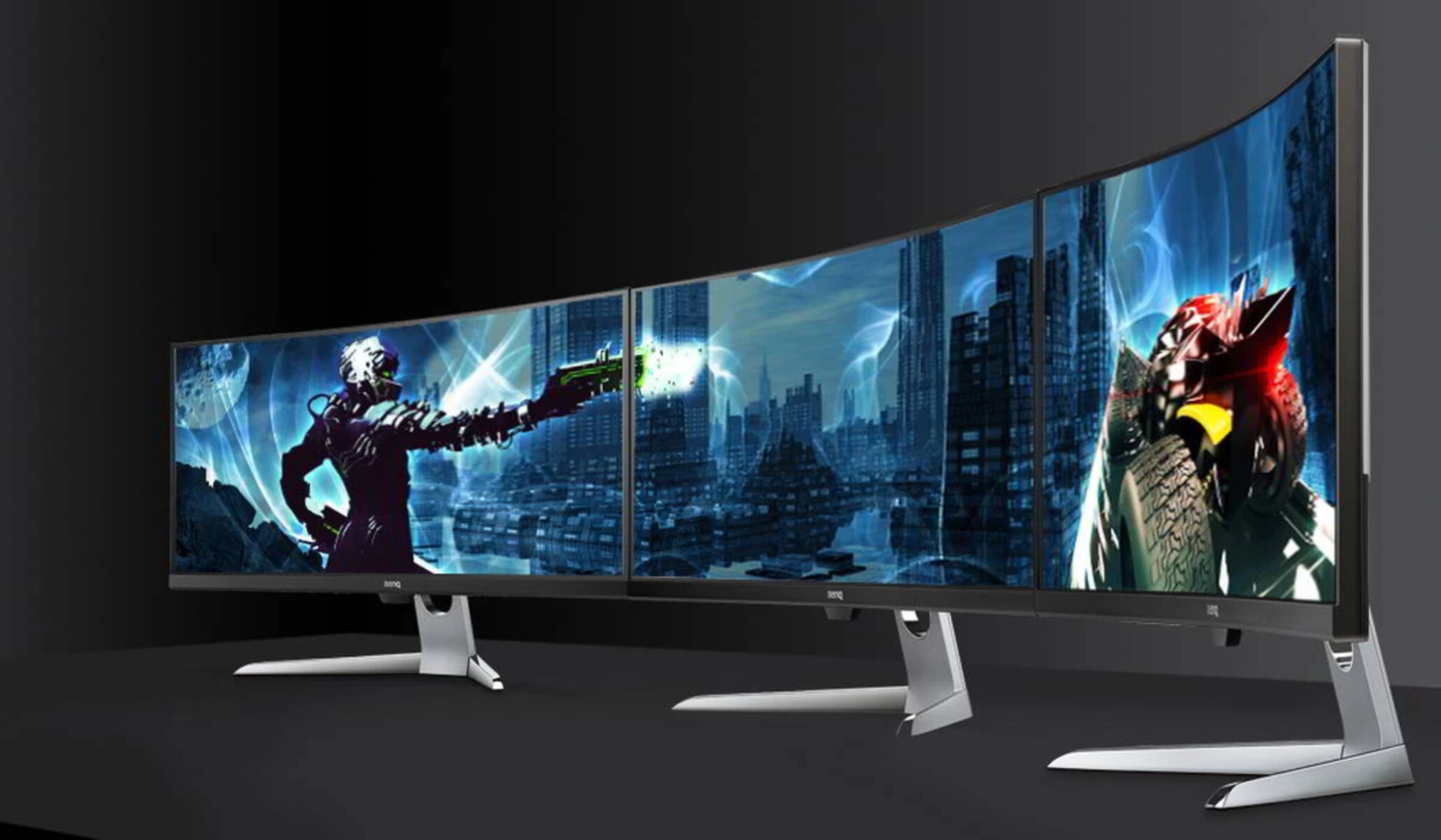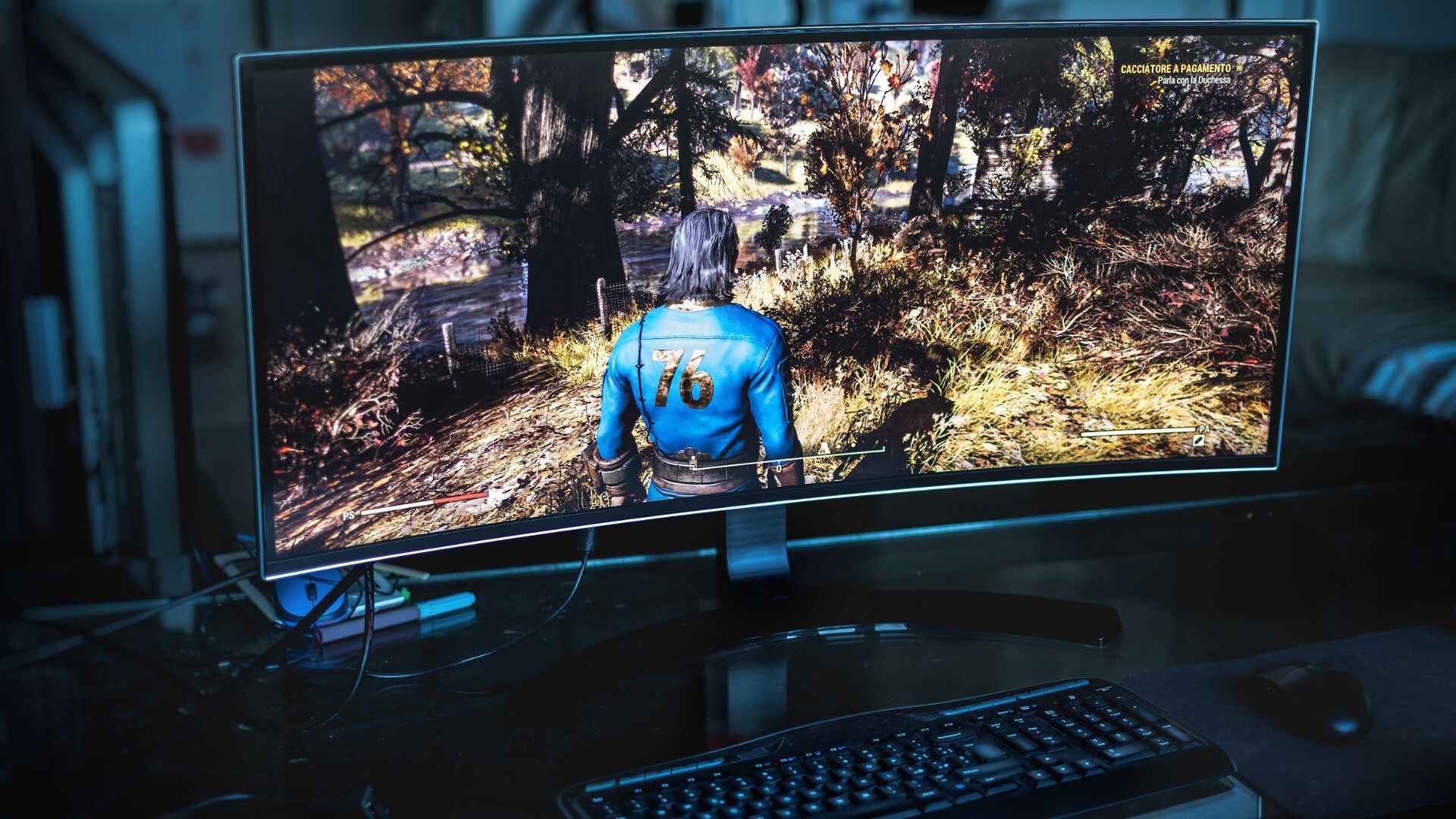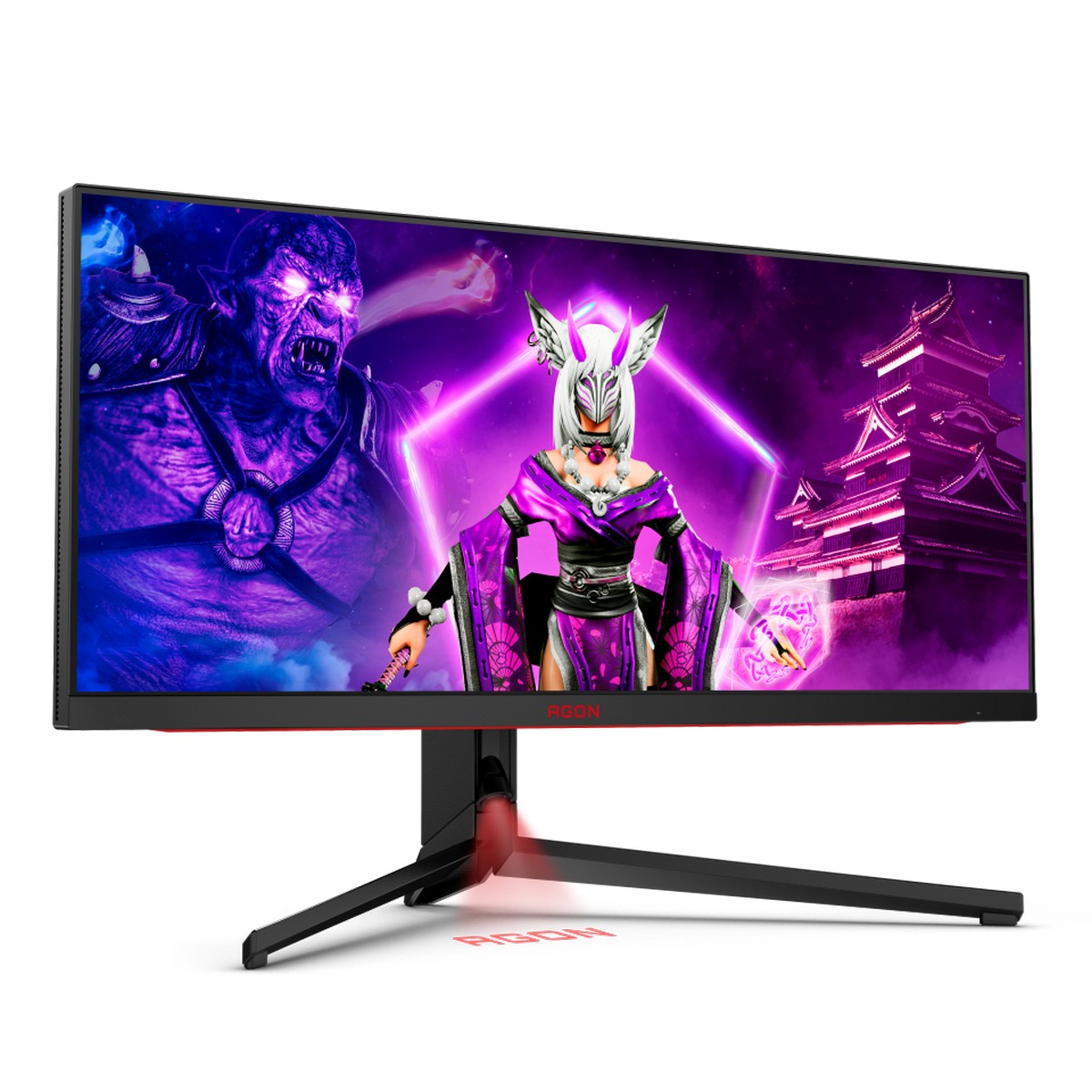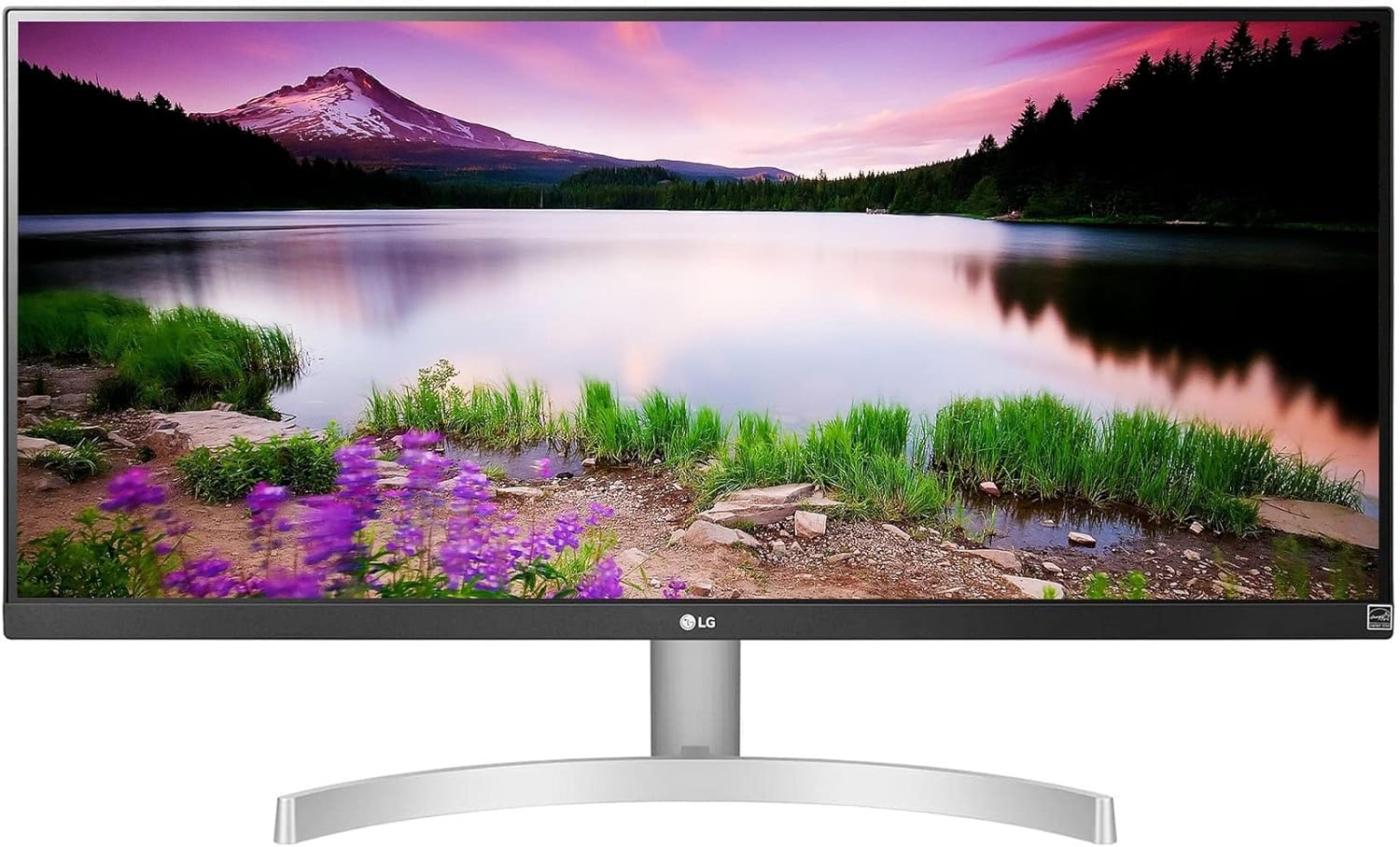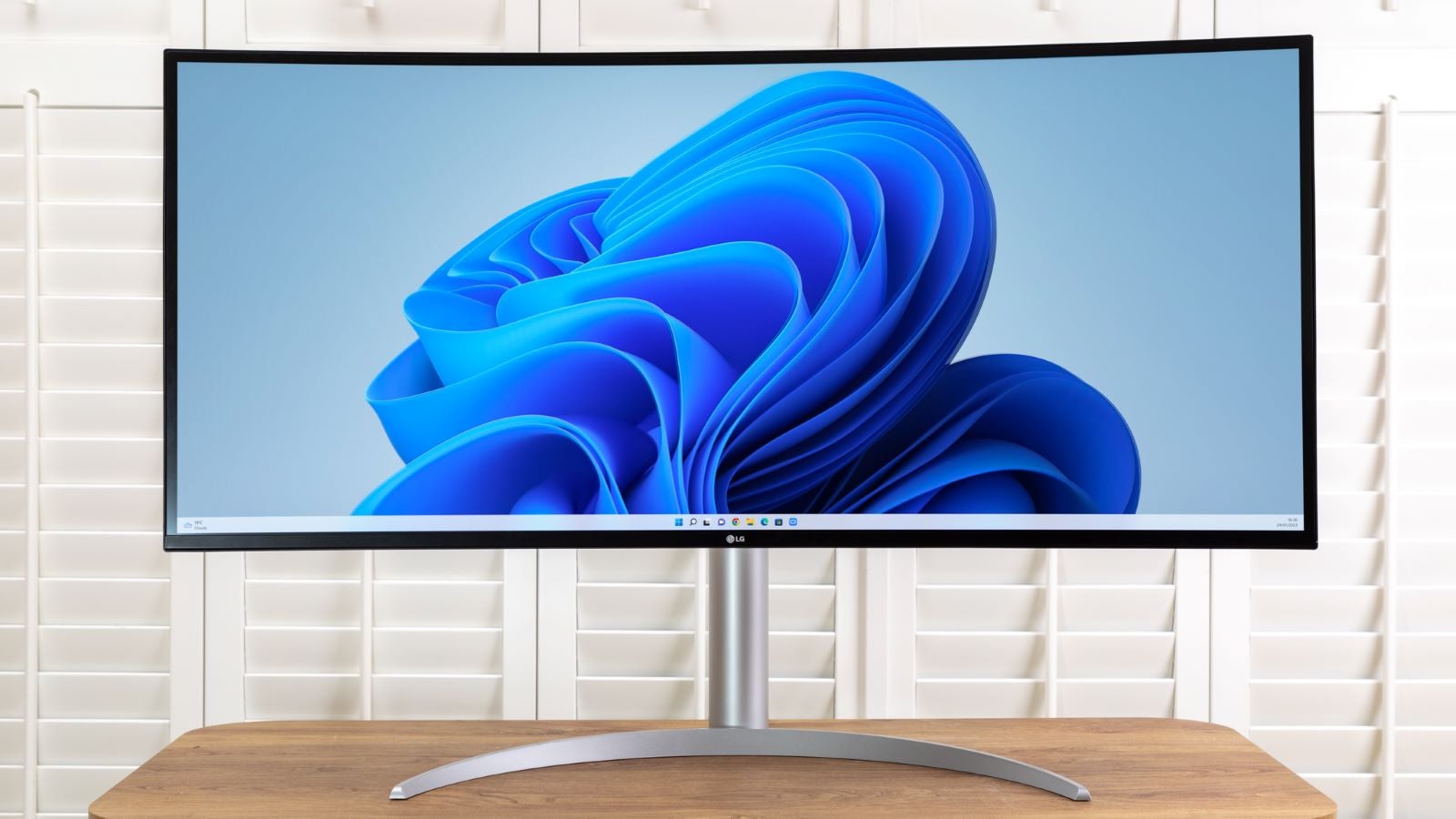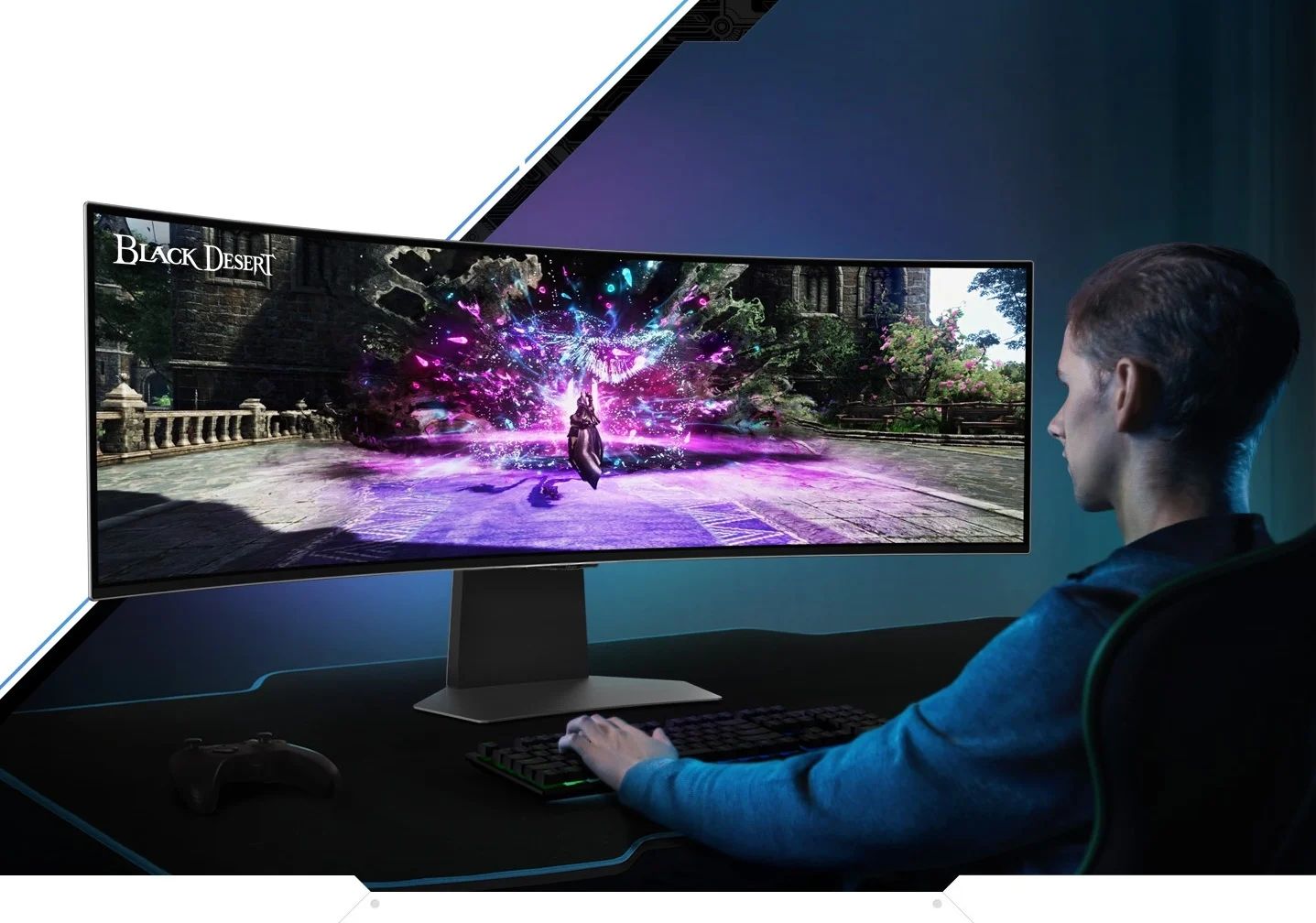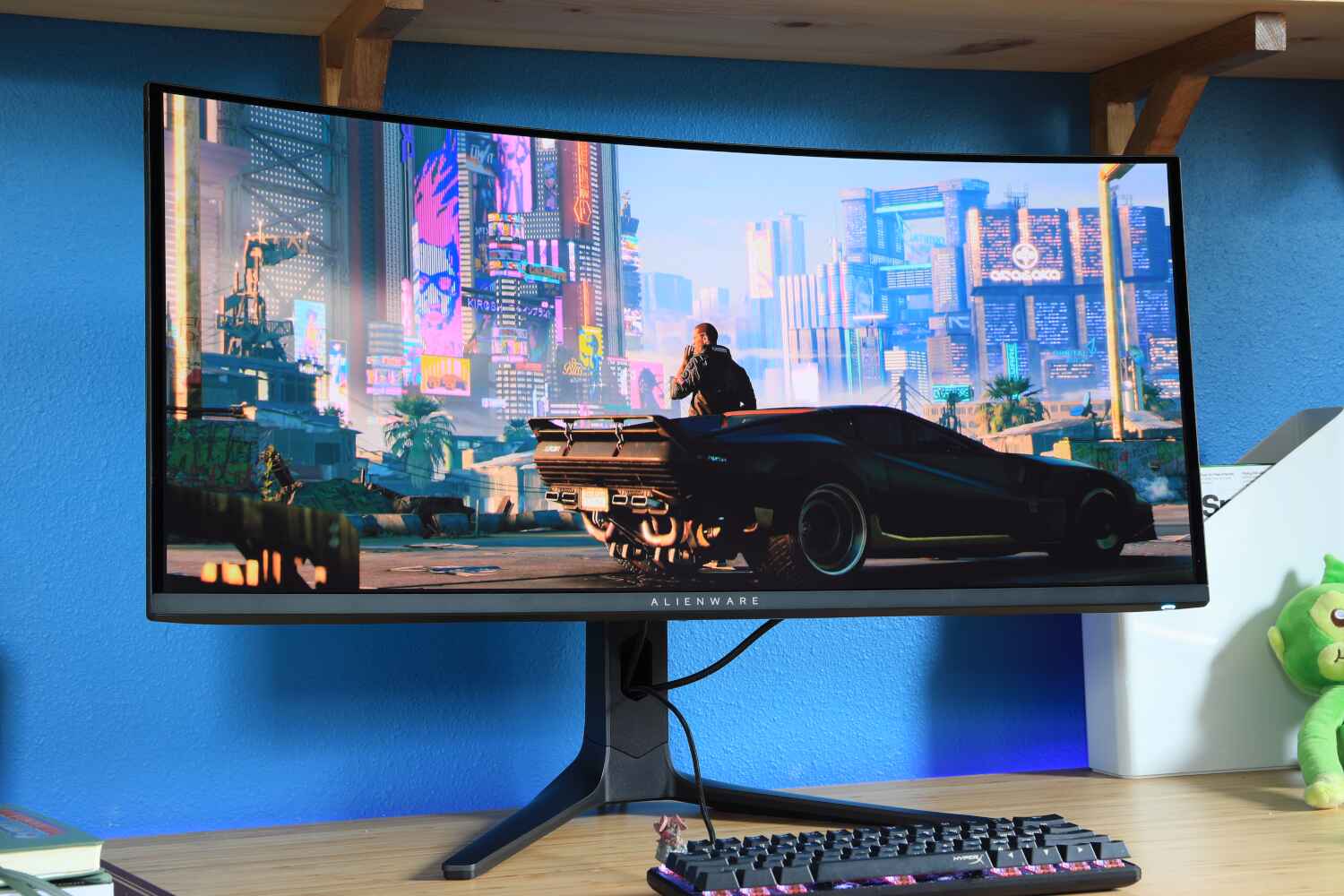Introduction
When it comes to gaming, having the right monitor can make all the difference. With the rise in popularity of ultrawide monitors, gamers are now able to immerse themselves in a wider and more expansive gaming experience. But what about the technology behind these monitors? Specifically, how important is FreeSync on an ultrawide monitor?
FreeSync is a technology developed by AMD that helps to eliminate tearing and stuttering during gameplay, providing a smoother and more enjoyable gaming experience. It works by synchronizing the refresh rate of the monitor with the graphics card, ensuring that each frame is displayed at the right time without any interruptions. This technology has become increasingly popular among gamers, especially those using AMD graphics cards.
In this article, we will delve into the importance of FreeSync on an ultrawide monitor and explore the benefits it brings to the gaming experience. Whether you’re a casual gamer or a hardcore enthusiast, understanding the significance of FreeSync on an ultrawide monitor can help you make an informed decision when choosing your next gaming display.
What is FreeSync?
FreeSync is a technology developed by AMD that aims to eliminate screen tearing and stuttering during gaming. Traditionally, screen tearing occurs when the monitor’s refresh rate and the graphics card’s rendering rate are out of sync. This results in unsightly horizontal lines across the screen, making the gaming experience less immersive and enjoyable.
With FreeSync, AMD has introduced a solution that synchronizes the refresh rate of the monitor and the output of the graphics card, ensuring smooth and tear-free gameplay. By dynamically adjusting the refresh rate of the monitor to match the frame rate of the graphics card, FreeSync creates a seamless experience where each frame is displayed without any interruptions.
This technology operates within a specific variable refresh rate range, which differs from monitor to monitor. Most FreeSync monitors have a range of 48-144Hz, meaning they can adjust their refresh rate between 48 and 144 times per second. This flexibility allows for greater adaptability to varying frame rates, resulting in a smoother and more fluid gaming experience.
It is important to note that FreeSync is an open standard, meaning it is not limited to AMD graphics cards. While it was developed by AMD, it can work with both AMD and Nvidia graphics cards, depending on the monitor’s compatibility. However, it is worth mentioning that Nvidia has its own similar technology called G-Sync, which is only compatible with Nvidia graphics cards.
Overall, FreeSync is a significant advancement in monitor technology that greatly improves the visual experience of gamers. By eliminating screen tearing and stuttering, it allows for more immersive and fluid gameplay, making it an important consideration for those looking to upgrade their gaming setup.
How does FreeSync work?
To understand how FreeSync works, it’s important to grasp the concept of refresh rate. The refresh rate of a monitor refers to the number of times the screen refreshes per second. Traditional monitors typically have a fixed refresh rate, commonly 60Hz or 144Hz.
FreeSync, on the other hand, utilizes an adaptive sync technology, which means that the monitor’s refresh rate can dynamically change to match the output of the graphics card. This synchronization between the graphics card and the monitor is achieved through the DisplayPort or HDMI connection.
When a game is being played, the graphics card sends frames to the monitor at a certain rate. With FreeSync enabled, the monitor adjusts its refresh rate to match the frame rate of the graphics card, ensuring that each frame is displayed at the right time.
Here’s a breakdown of how FreeSync works:
- Graphics Card and Monitor Communication: The graphics card and the monitor communicate via the DisplayPort or HDMI connection, exchanging information about the frame rate of the graphics card and the capabilities of the monitor.
- Dynamic Refresh Rate: FreeSync allows the monitor to adapt its refresh rate on-the-fly based on the frame rate output of the graphics card. This means that if the graphics card outputs 60 frames per second (FPS), the monitor will adjust its refresh rate to 60Hz to match the frame rate.
- Eliminating Tearing and Stuttering: By synchronizing the refresh rate of the monitor with the frame rate of the graphics card, FreeSync eliminates screen tearing and stuttering. Tearing occurs when the monitor displays parts of two separate frames simultaneously, while stuttering occurs when the frame rate drops below the monitor’s refresh rate. With FreeSync, these issues are greatly reduced or fully eliminated, resulting in a smoother gaming experience.
It’s worth noting that FreeSync operates within a specific variable refresh rate range, which varies depending on the monitor. This range is typically indicated in the monitor’s specifications and represents the minimum and maximum refresh rates the monitor can achieve with FreeSync.
Overall, FreeSync’s ability to dynamically adjust the monitor’s refresh rate to match the frame rate output of the graphics card is what makes it an effective solution for eliminating tearing and stuttering, delivering a more immersive and seamless gaming experience.
Benefits of FreeSync
FreeSync brings several benefits to the gaming experience, making it a valuable technology for gamers. Here are some of the key advantages of utilizing FreeSync:
- Smooth and Tear-Free Gameplay: One of the primary benefits of FreeSync is the elimination of screen tearing. By synchronizing the monitor’s refresh rate with the graphics card’s output, FreeSync ensures that each frame is displayed at the right time, resulting in a smoother and more visually pleasing gaming experience without any tearing.
- Reduced Stuttering: In addition to eliminating tearing, FreeSync also reduces stuttering. Stuttering occurs when the frame rate of the game drops below the monitor’s refresh rate, causing irregular and jerky animations. With FreeSync, the monitor’s refresh rate is dynamically adjusted, preventing stuttering and providing a more fluid gaming experience, even in situations where the frame rate fluctuates.
- Improved Responsiveness: FreeSync can improve the responsiveness of games by reducing input lag. Input lag refers to the delay between a player’s input and the corresponding action on the screen. The synchronization between the graphics card and the monitor in FreeSync helps to minimize this delay, resulting in a more responsive gameplay experience.
- Optimal Frame Rates: With FreeSync, gamers can fully utilize their hardware capabilities without the need to manually cap or limit the frame rate. The technology allows for a variable refresh rate range, which means that the monitor can adjust its refresh rate to match the frame rate output of the graphics card within that range. This enables a more optimal and efficient use of hardware resources.
- Compatibility with AMD Graphics Cards: FreeSync is developed by AMD and is integrated into their graphics cards. This compatibility ensures seamless and reliable operation between the graphics card and the monitor. Gamers using AMD graphics cards can take full advantage of FreeSync’s benefits without any additional setup or configuration.
These benefits make FreeSync a highly desirable feature for gamers looking to enhance their gaming experience. The technology’s ability to deliver smooth, tear-free gameplay with reduced stuttering and improved responsiveness is a significant advantage that can greatly enhance immersion and enjoyment in both casual and competitive gaming scenarios.
Does FreeSync matter on an Ultrawide monitor?
For gamers considering an ultrawide monitor, the question arises: Does FreeSync really matter? The answer is a resounding yes. FreeSync is just as important, if not more so, on an ultrawide monitor as it is on a standard monitor. Here’s why:
Smooth Gaming Experience: Ultrawide monitors offer a wider field of view, making them ideal for immersive gaming. However, this increased visual experience can be hindered by issues such as screen tearing and stuttering. FreeSync on an ultrawide monitor ensures a smooth gaming experience by eliminating these distractions, allowing you to fully enjoy the expansive display without any visual interruptions.
Reduced Screen Tearing and Stuttering: The wider aspect ratio of an ultrawide monitor can place additional strain on the graphics card, particularly when rendering demanding scenes. FreeSync helps to alleviate this strain by synchronizing the refresh rate of the monitor with the frame rate output of the graphics card. This synchronization reduces screen tearing and stuttering, creating a seamless and fluid gaming experience on an ultrawide monitor.
Compatibility with AMD Graphics Cards: Ultrawide monitors with FreeSync are designed to work seamlessly with AMD graphics cards. If you are using an AMD GPU, FreeSync ensures optimal performance and compatibility out of the box. This pairing allows you to take full advantage of the benefits that FreeSync offers on your ultrawide monitor, providing an enhanced gaming experience.
Responsive Gameplay: The wider screen real estate of an ultrawide monitor can give you a competitive edge in games, but it needs to be supported by responsive gameplay. With FreeSync, you can reduce input lag and improve the responsiveness of your games. This means that your actions and inputs will be reflected more quickly on the screen, giving you a smoother and more precise gaming experience on your ultrawide monitor.
Ultimately, FreeSync is a crucial technology for an ultrawide monitor. It enhances the gaming experience by delivering smooth visuals, reducing screen tearing and stuttering, and improving responsiveness. If you’re investing in an ultrawide monitor for gaming, choosing one with FreeSync will significantly enhance your enjoyment and immersion, providing a more fluid and seamless gameplay experience.
Smooth Gaming Experience
When it comes to gaming, a smooth and uninterrupted experience is essential for full immersion and enjoyment. This is where FreeSync on an ultrawide monitor truly shines, delivering a seamless gaming experience like no other.
An ultrawide monitor combined with FreeSync technology provides a wider field of view, allowing you to see more of the game world and truly immerse yourself in the action. This expanded view enhances the overall gaming experience, making it more captivating and immersive.
With FreeSync, the monitor’s refresh rate dynamically adjusts to match the frame rate output of your graphics card. This synchronization ensures that each frame is displayed at the right time, without any tearing or stuttering. As a result, gameplay feels incredibly smooth and fluid, bringing your games to life and allowing you to react quickly and accurately to in-game events.
The elimination of screen tearing is particularly noticeable on an ultrawide monitor due to its wider aspect ratio. Traditional monitors often struggle to handle the demands of rendering high frame rates on a wider screen, leading to visible tearing. FreeSync on an ultrawide monitor solves this problem, providing tear-free visuals and a more visually pleasing experience.
Furthermore, with the wider field of view that an ultrawide monitor offers, the smooth motion provided by FreeSync enhances the sense of immersion and realism. Whether you’re exploring expansive open worlds, engaging in fast-paced action, or even just navigating menus, FreeSync eliminates distractions and ensures that your gaming experience remains seamless and uninterrupted.
Whether you’re playing AAA titles, competitive multiplayer games, or even enjoying cinematic adventures, FreeSync on an ultrawide monitor delivers a smooth gaming experience that enhances your enjoyment and immersion. Say goodbye to jagged edges, screen tearing, and stuttering, and say hello to a visually stunning and immersive gaming experience on your ultrawide monitor with FreeSync.
Reduced Screen Tearing and Stuttering
One of the most frustrating issues that gamers often face is screen tearing and stuttering during gameplay. These problems can significantly undermine the gaming experience and hinder the overall enjoyment. However, with the implementation of FreeSync on an ultrawide monitor, screen tearing and stuttering are greatly reduced, if not completely eliminated.
Screen tearing occurs when the graphics card’s frame rate and the monitor’s refresh rate are out of sync. This misalignment causes the monitor to display parts of two or more frames at the same time, resulting in a visible horizontal tear on the screen. The wider aspect ratio of an ultrawide monitor can exacerbate screen tearing, as it requires more rendering power to maintain a consistent frame rate.
FreeSync tackles this issue by synchronizing the refresh rate of the monitor with the output frame rate of the graphics card. This dynamic adjustment ensures that each frame is displayed at the right time, eliminating screen tearing and delivering a visually cohesive gaming experience. Whether you’re in the heat of battle or exploring vast virtual worlds, the absence of screen tearing allows you to fully immerse yourself in the game without any distracting visual anomalies.
In addition to screen tearing, stuttering is another common issue caused by inconsistent frame rates. When the frame rate drops below the monitor’s refresh rate, the result is noticeable stuttering or choppiness in the gameplay. This can disrupt the flow of the game and make it difficult to react quickly and accurately.
FreeSync helps to combat stuttering by dynamically adjusting the monitor’s refresh rate to match the varying frame rates output by the graphics card. This synchronization ensures a smooth and stable visual experience, even when the frame rate fluctuates. As a result, the gameplay feels much more fluid, allowing for more precise movements and eliminating the choppiness that can disrupt immersion.
By reducing screen tearing and stuttering, FreeSync on an ultrawide monitor significantly enhances the visual quality of games. The smooth and tear-free visuals create a more immersive environment, allowing you to focus on the game itself rather than distracting visual artifacts. Whether you’re a casual gamer or a competitive enthusiast, the reduced screen tearing and stuttering provided by FreeSync on an ultrawide monitor contribute to a more enjoyable and visually pleasing gaming experience.
Compatibility with AMD Graphics Cards
One key advantage of FreeSync on an ultrawide monitor is its seamless compatibility with AMD graphics cards. FreeSync technology was developed by AMD, making it an integral part of their graphics card ecosystem. This compatibility ensures optimal performance and a hassle-free experience for gamers using AMD GPUs.
When you pair an AMD graphics card with an ultrawide monitor featuring FreeSync, the two work in perfect harmony. There’s no need for additional software or settings adjustments; the technology simply functions out of the box. The monitor and graphics card communicate and synchronize their operations, ensuring smooth and tear-free gaming experiences.
AMD provides regular driver updates that optimize the performance of their graphics cards, including support for FreeSync technology. These updates deliver improved compatibility and performance enhancements, further enhancing the gameplay experience on an ultrawide monitor.
With an AMD graphics card and FreeSync, you can take full advantage of the benefits that this technology offers. The synchronization between the graphics card’s frame output and the monitor’s refresh rate allows for tear-free and stutter-free visuals. This compatibility ensures that your gaming experience is as smooth and immersive as possible.
It’s worth noting that FreeSync is not limited to AMD graphics cards. In some cases, certain ultrawide monitors with FreeSync may also be compatible with Nvidia graphics cards. However, official support for FreeSync on Nvidia GPUs is limited, as Nvidia has its own similar technology called G-Sync. Therefore, for the best compatibility and performance, pairing an ultrawide monitor with FreeSync with an AMD graphics card is the recommended choice.
If you already have an AMD graphics card or are planning to purchase one, choosing an ultrawide monitor with FreeSync is the ideal combination. The compatibility between these components ensures a seamless gaming experience with enhanced visuals and reduced screen tearing. Whether you’re a casual gamer or a hardcore enthusiast, this compatibility allows you to fully enjoy the benefits of FreeSync on an ultrawide monitor, providing a more immersive and satisfying gaming experience.
Is FreeSync necessary for all games?
While FreeSync brings significant benefits to the gaming experience, it may not be necessary for all games. The necessity of FreeSync depends on various factors, including gameplay style, genre, and personal preference.
Firstly, FreeSync is particularly beneficial for fast-paced and action-oriented games, where smooth and tear-free visuals are crucial. Games with quick camera movements and fast-paced action can suffer from screen tearing and stuttering without the synchronicity provided by FreeSync. The technology ensures that each frame is displayed without interruptions, allowing for a more responsive and immersive experience in such games.
On the other hand, slower-paced games or genres that are less demanding on the graphics card may not see as significant of an impact from FreeSync. If a game consistently maintains a stable and high frame rate that matches or exceeds the monitor’s refresh rate, screen tearing and stuttering may not be noticeable. In these cases, while FreeSync can still provide a smoother visual experience, the difference may not be as pronounced.
Another factor to consider is the type of monitor being used. FreeSync requires a compatible monitor that supports the technology. If you already have a monitor or are planning to purchase one without FreeSync support, then the necessity of FreeSync for your games becomes irrelevant.
Furthermore, it’s essential to note that while FreeSync can minimize visual distractions, it does not directly impact other aspects of gameplay, such as input lag or game mechanics. If you prioritize factors such as low input lag or specific gameplay features for a particular game, FreeSync may take a back seat in terms of necessity.
Ultimately, the necessity of FreeSync for all games depends on individual preferences and priorities. If you value a smooth and tear-free visual experience, particularly in fast-paced games with demanding graphics, FreeSync is highly recommended. However, for slower-paced games or games that maintain a stable frame rate, the benefits of FreeSync may be less noticeable or crucial to your gaming experience.
It’s important to consider all these factors and assess your specific gaming needs before deciding on the necessity of FreeSync. Understanding the capabilities and limitations of both your graphics card and monitor will help you make an informed decision regarding the relevance and importance of FreeSync for your gaming setup.
Other Considerations for Buying an Ultrawide Monitor with FreeSync
When purchasing an ultrawide monitor with FreeSync, there are several additional factors to consider to ensure you make the right choice for your gaming setup. While FreeSync is an important feature, it’s important to look at the overall specifications and features of the monitor to ensure it meets your gaming needs.
Resolution: The resolution of the ultrawide monitor should be a key consideration. Higher resolutions, such as 3440×1440 (WQHD) or 5120×1440 (UWQHD), provide a more detailed and immersive gaming experience. Keep in mind that higher resolutions require more powerful graphics cards to maintain higher frame rates and take full advantage of FreeSync.
Refresh Rate: The refresh rate determines how many times the monitor can refresh its image per second. Look for monitors with higher refresh rates, such as 144Hz or even 240Hz, as they offer smoother and more responsive gameplay. When paired with FreeSync, higher refresh rates can further enhance the visual experience by reducing screen tearing and stuttering.
Response Time: Response time refers to how quickly a pixel can change from one color to another. Lower response times, preferably 1ms or 2ms, are ideal for reducing motion blur and ghosting in fast-paced games. This ensures that the monitor can keep up with the fast movements on screen, providing a clearer and more enjoyable gaming experience.
Panel Technology: Different panel technologies, such as IPS, VA, and TN, offer different advantages in terms of color accuracy, contrast ratio, and viewing angles. Consider your priorities, such as color accuracy for immersive visuals or fast response times for competitive gaming, and choose a panel technology that aligns with your preferences.
Features and Connectivity: Look for additional features like adjustable stands, built-in speakers, USB ports, and various connectivity options (such as DisplayPort and HDMI) to meet your specific needs. These features can enhance your overall gaming setup and provide added convenience and flexibility.
Price and Budget: Set a budget and consider the price range of ultrawide monitors with FreeSync. While it’s important to invest in a monitor that meets your requirements, ensure it fits within your budget limitations as well.
By considering these factors alongside the inclusion of FreeSync, you can ensure that you make a well-informed decision when purchasing an ultrawide monitor. Evaluating the monitor’s overall specifications and features will help you find the perfect balance between FreeSync technology and other essential aspects for an optimal gaming experience.
Conclusion
FreeSync on an ultrawide monitor is a valuable technology that can greatly enhance your gaming experience. The synchronization between the monitor’s refresh rate and the output of your graphics card ensures smooth and tear-free visuals, reducing screen tearing and stuttering. This technology is particularly beneficial for fast-paced games, where responsiveness and fluidity are crucial.
When considering an ultrawide monitor with FreeSync, it’s important to look beyond just the inclusion of this feature. Consider factors such as resolution, refresh rate, response time, panel technology, and additional features to ensure that the monitor meets your specific gaming needs.
While FreeSync provides significant advantages, it may not be essential for all games, especially those with stable frame rates or slower gameplay. Therefore, assess your gaming preferences, genre preferences, and monitor requirements to determine the necessity of FreeSync for your gaming setup.
Ultimately, an ultrawide monitor with FreeSync offers an immersive and visually captivating gaming experience. It reduces distractions, enhances smoothness, and ensures tear-free visuals, allowing you to fully immerse yourself in the game world. By considering all the necessary factors, you can find the perfect balance between FreeSync technology and other important features, ensuring an optimal gaming experience tailored to your preferences.







